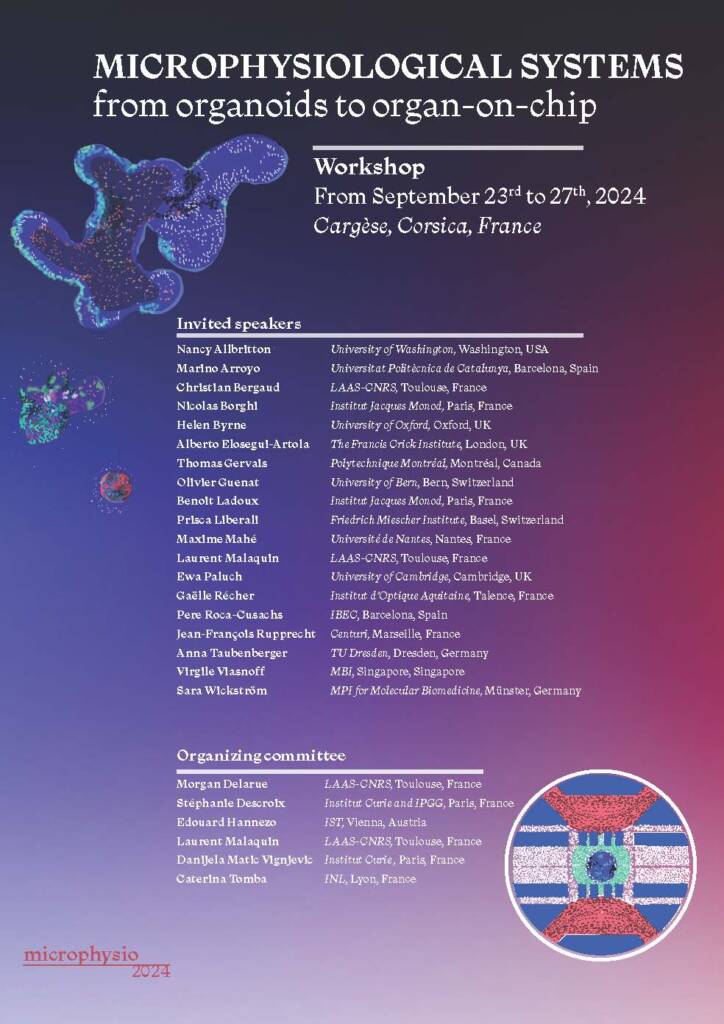Microphysio24: From organoids to organs-on-chips
The 2nd edition of the MicroPhysio conference on « Micro-physiological models: From organoids to organs-on-chip » will take place at the CNRS center in Cargèse (www.iesc.univ-corse.fr) from September 23rd to September 27th, 2024.
It is becoming increasingly clear that even the best in vivo models such as genetically-modified mouse models or orthotopic patient-derived xenografts cannot recapitulate the full complexity of human physiology. In addition, in vivo models do not comply with ‘3R’ – Replacement, Reduction, Refinement – calling for in vitro alternatives to mimic functional organs and pathologies.
Two parallel and complementary in vitro approaches have been undertaken by researchers coming from various fields since the early 2010s: organoids and organs-on-chip, that together form the vast domain of micro-physiological systems. On the one hand, biology groups have worked on a better definition of the cellular microenvironment in terms of cell-matrix interaction and chemicals leading to three-dimensional self-organization of cells forming functional organ sub-units, called organoids. On the other hand, organs-on-chip primarily come from the field of microfluidics, with the end-goal of imposing a well-defined topology and physico-chemical environment onto cells, to understand quantitatively the simplest design principles of organ response and function. The recent interactions between these fields have led to the development of exquisite micro-physiological systems mimicking organs (e.g. gut, liver, lung…). The successful development and assessment of these approaches require sophisticated techniques to sense and probe – optically or electrochemically – the physiological parameters, alongside advanced three-dimensional microscopy to investigate cell architecture and topology, and biomaterial developments for proper topology and cell-matrix interaction control.
The use of micro-physiological systems have led both to fundamental insights into the mechanisms of organogenesis, and is opening the door to numerous clinical applications. As research advances, our mechanistic understanding on the role of the microenvironment will require cooperation between an expanding number of fields of science. The aim of this conference is to gather together researchers coming from the many fields that define the new paradigm of micro-physiological systems, from theorists to experimentalists all the way to bioengineers, clinicians and researchers from pharmaceutical companies.
Abstract submission for the new edition of our conference, Microphysio24: From organoids to organs-on-chips is now open, until May 31st : https://microphysio24.sciencesconf.org/
The Organizing Committee.
Morgan Delarue
Stéphanie Descroix
Edouard Hannezo
Laurent Malaquin
Danijela Matic Vignjevic
Caterina Tomba


